HONDA ELITE S / SR / LX (SA50)
The story with Honda’s 50cc Elite scooters may be a bit confusing as Honda sold quite a few different models and each model usually came in several versions with differing names. This article deals with the 1988 – 2001 Honda SA50 scooter, which used the names Elite LX, Elite SR and Elite S. This scooter was introduced to the USA market for 1988 as a replacement for the Aero 50 and Elite S (SE50). The SA50 was not sold in the Canadian market. The physically smaller ’88 – ’90 Elite E or Elite ES was also sold during the Elite SR / LX years and is dealt with separately on this page.
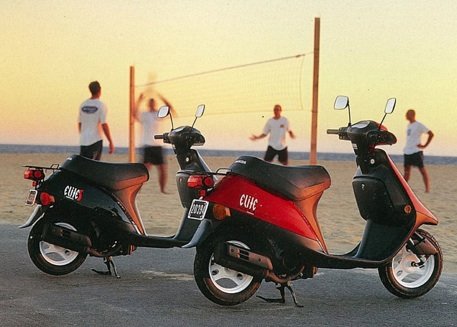
When it was introduced, the SA50 was an entirely new machine except for the motor, front suspension, rims and a few other tiny bits. So the frame, bodywork and most other parts were a fresh design. The new SA50 frame was a tube style frame rather than beam frame used in the SE50. The wider SA50 frame was both stronger and lighter.
Overseas the SA50 was offered in a few European countries. It was typically called the ‘Vision’, but Honda used this name for a few other scooters as well over the years so be careful when buying parts.
Motors
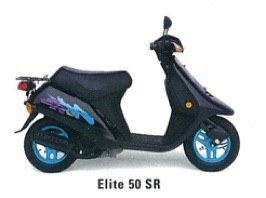
While the core engine is the same between the ’94 – ‘01 Elite SR and the Canadian Dio the airbox, carb and mufflers were all different so be careful when buying parts. The Dio had the same carb, airbox and exhaust found on the Japanese Dio’s (AF18E motors), whereas the ’94 Elite 50 retained the airbox and carb from the earlier ’88-’93 Elite SA50 and used a different muffler. Overseas many versions of the ‘Dio’ scooter are sold with a range of engines so be careful when buying parts intended for an asian Dio. Overseas the Dio is really a whole family of scooters that includes many 2-stroke and 4-stroke engines. The AF18E motor found overseas is basically the same engine as the AF16E (just Japanese vs. American spec), so if you’re looking for aftermarket parts you’ll want to focus on AF18E parts as that is what most aftermarket parts are marketed as being for.
Mid way through the 1998 model year, Honda made a change to the rear axle shaft that is important to know if you are replacing your rear axle or piecing together an SA50 Elite. The ’94 – ’98 axles were 15mm in diameter where they fit into the transmission, whereas 1999 and later models were 16 or 16.5mm. Accordingly, the axles are non-compatible between earlier and later years unless you also acquire the corresponding case cover (thx Wheelman111).
The Elite S was restricted via a washer behind the variator, a smaller main jet and a highly restrictive exhaust. If you are going to de-restrict one, you should also know that the restricted version has a different throttle cable that does NOT open the oil pump like the full speed version. Accordingly, the oil pump just runs at the set idle level at all times. If you derestrict yours, you can either run premix, replace the throttle cable with the regular version cable that ‘Y’s to open the oil pump or you can zip tie the oil pump to the wide open position and raise your emissions and oil bill a bit. The SA50P was very popular in areas that have legislation strongly favoring ‘mopeds’.
A decent selection of aftermarket parts are still available for early ’88 – ’93 SA50’s. You can get 63cc big bore kits, variators, clutch springs and CDI’s. The selection isn’t as abundant as it is for the ’94 – ’01 SA50 but it’s not bad. Since these scooters share the same engine as the ’85 – ’87 Aero 50 and ’87 SE50, you can use parts from that scooter. However, Honda did make a number of small changes to the intake manifold, oil pump and crankshaft (and perhaps more) so be careful when buying parts. You can also use the intake manifold and reeds from the Aero 80 scooter as detailed here.
With the switch to the newer ‘AF16E’ engine for ’94, the aftermarket parts options grew immensely. You can get 80cc big bore kits which can take this scooter to well over 100cc with the addition of a stroker crank. 70mph is attainable with a moderate 80cc build for a few hundred dollars. A good source for these parts is ScooterSwapShop.
Design and Amenities
Compared to the SE50 scooter than it replaced, one of the most welcome changes was the addition of a proper glovebox instead of the open cubby holes in the legshield. All SA50’s also have moderate underseat storage space which can swallow most full face helmets, although retrieving larger helmets can be a bit tricky as the storage area leaves no way to reach under the helmet to pull it out, so you’ll want to place it in upside down
The Elite SR / LX / S used drum brakes at both ends of the scooter. Accordingly, braking performance is nothing special. It would have been nice to see a front disc brake included like the ones Honda uses many of their 50’s overseas.
 Discussion
Discussion
After 2001 the SA50 was dropped, making the 2001 Elite SR the last street legal 2-stroke vehicle from Honda sold in the USA. These scooters have proven to be very reliable. You can find one relatively easily for $600 – $1200 depending on milage, year and condition. These scooters are often great buy because they are quite cheap yet reliable and fast.
One questionable decision Honda made regarding the Elite LX / SR was the color offerings. For a number of years (1996 – 1999) Honda only offered this scooter in purple and yellow which surely hurt sales. Purple stuck around for 2000, but Honda wisely added black and grey options as well. In the final year (2001) Honda offered both black and red, which is probably what they should have been doing all along.
At the time, the primary competition to the Elite SR / LX was Yamaha’s Jog and Zuma scooters. Suzuzki also sold a competitor up in Canada called the ‘Hyper AE50’ but that scooter didn’t make it to the USA. The Elite SR / LX was a good all around choice, as it offered a reliable and peppy 2-stroke engine and quite a bit of storage, making it a fun and capable scooter for around town use. It’s also a popular scooter with speed enthusiasts due to the immense quantity and variety of parts available for it.
Pros:
- Loads of aftermarket parts (especially for ’94+)
- Peppy and reliable
- Abundant storage
Cons:
- No front disc brake
- Questionable color offerings
Links:
Elite SA50 Service Manual – Extremely good technical info on the SA50 (11 MB)
1997 Elite 50 Owners Manual – Neat to have but it’s all in the service manual (7 MB)
MotorscooterGuide Forums – Visit the forum on this site to chat about your scoot
HondaSpree.net – Great forum for the Elite 50 and Spree
ScooterSwapShop – Aftermarket goodies
Colors:
- 1988: Shasta White, Fighting Red
- 1989: Coral Blue, Fighting Red
- 1990: Coral Blue, Fighting Red
- 1991: Coral Blue, Fighting Red
- 1992: Black
- 1993: Black
- 1994: Gloss Black, Monza Red
- 1995: Gloss Black, Monza Red
- 1996: Pearl Majestic Purple, Pearl Hot Rod Yellow
- 1997: Pearl Majestic Purple, Pearl Rio Yellow
- 1998: Pearl Majestic Purple, Pearl Rio Yellow
- 1999: Pearl Majestic Purple, Pearl Rio Yellow
- 2000: Pearl Majestic Purple, Gloss Black, Carbon Grey
- 2001: Gloss Black, Monza Red
Key Specs – 1998-1993 Models (AF05E engine)
- Engine: Air-cooled, 2-stroke single
- Power: 3.8hp @ 6000 RPM
- Compression Ratio: 6.9:1
- Ignition: Capacitor discharge
- Starter: Electric and Kick
- Transmission: Honda V-matic variable ratio with automatic clutch
- Length: 65.0″ / 1650mm
- Width: 25.6” / 650mm
- Height: 39.8” / 1010mm
- Wheelbase: 45.7” / 1160mm
- Seat Height: 29.5” / 750mm
- Fuel Capacity: 4.6L / 1.2 US Gallons
- Wheels: Steel
- Tires: 3.00 x 10” (Front & Rear)
- Front Suspension: Bottom link, trailing fork
- Rear Suspension: Swing unit, single shock
- Brakes: Drum / Drum
- Dry Weight: 138 lbs / 62.4 kg
- Engine Weight: 32.4 lbs (dry)
- Max Weight Capacity: 200 lbs
- Final Reduction Ratio: 11.097:1
Key Specs – 1994 – 2001 Models (AF16E engine)
- Engine: Air-cooled, 2-stroke single, 49.4cc
- Bore x Stroke: 39.0mm x 41.4mm
- Power: 5.6hp @ 6500 RPM
- Compression Ratio: 7.0 : 1
- Engine Weight: 35.5 lbs
- Ignition: CDI
- Starting: Electric start and Kick
- Transmission: CVT
- Length: 65.2” / 1655mm
- Width: 25.6” / 650mm
- Height: 39.8” / 1010mm
- Wheelbase: 46.1” / 1170mm
- Seat Height: 29.5” / 750mm
- Fuel Capacity: 4.6L / 1.2 US Gallons
- Tires: 3.00 x 10″.
- Front Suspension: Bottom link, trailing fork
- Rear Suspension: Swing unit, single shock
- Brakes: Drum / Drum
- Dry Weight: 143 lbs (SA50) or 144 lbs (SA50P)
- Engine Weight: 36.4 lbs (dry)
- Final Reduction Ratio: 12.115:1

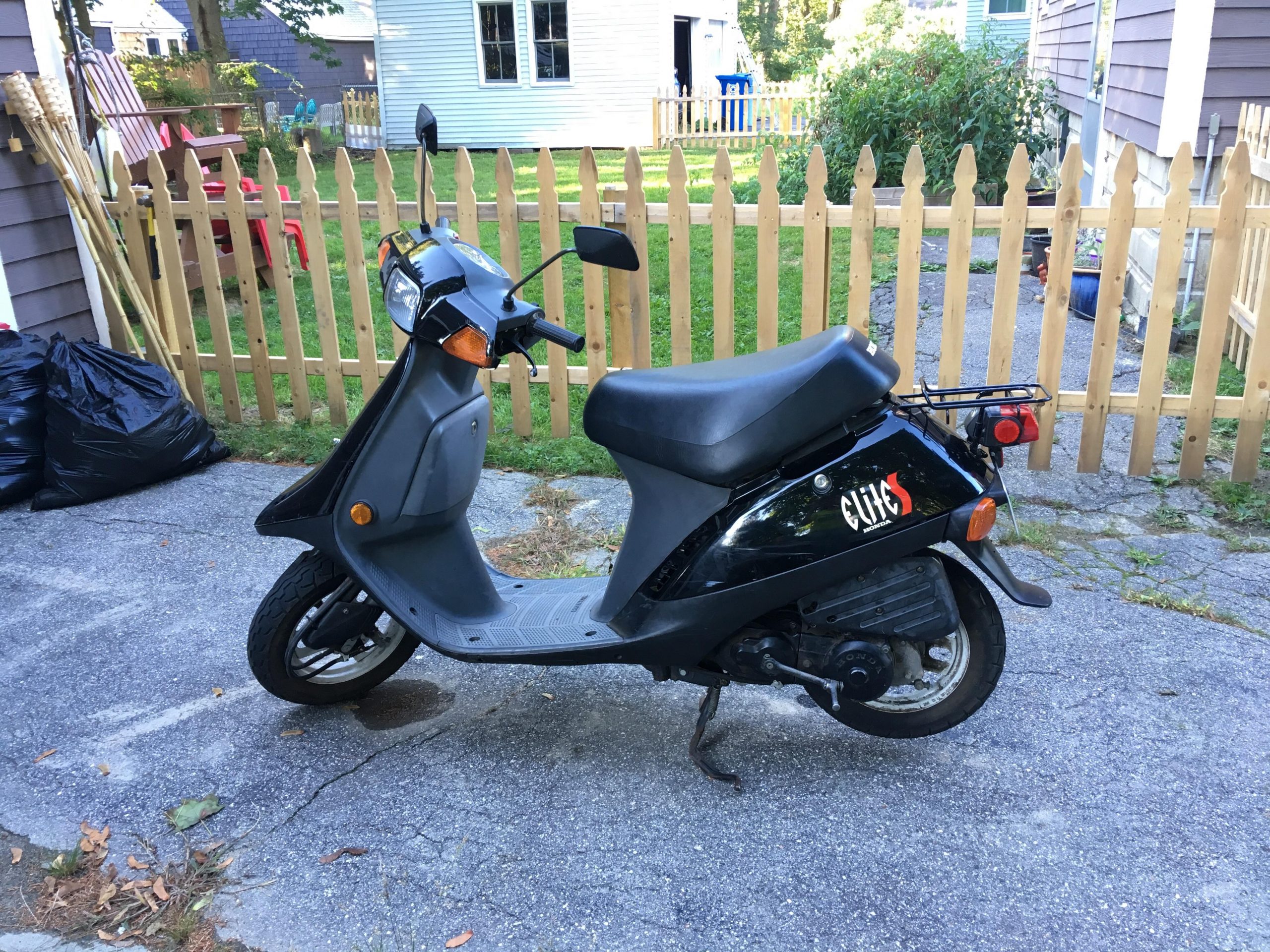
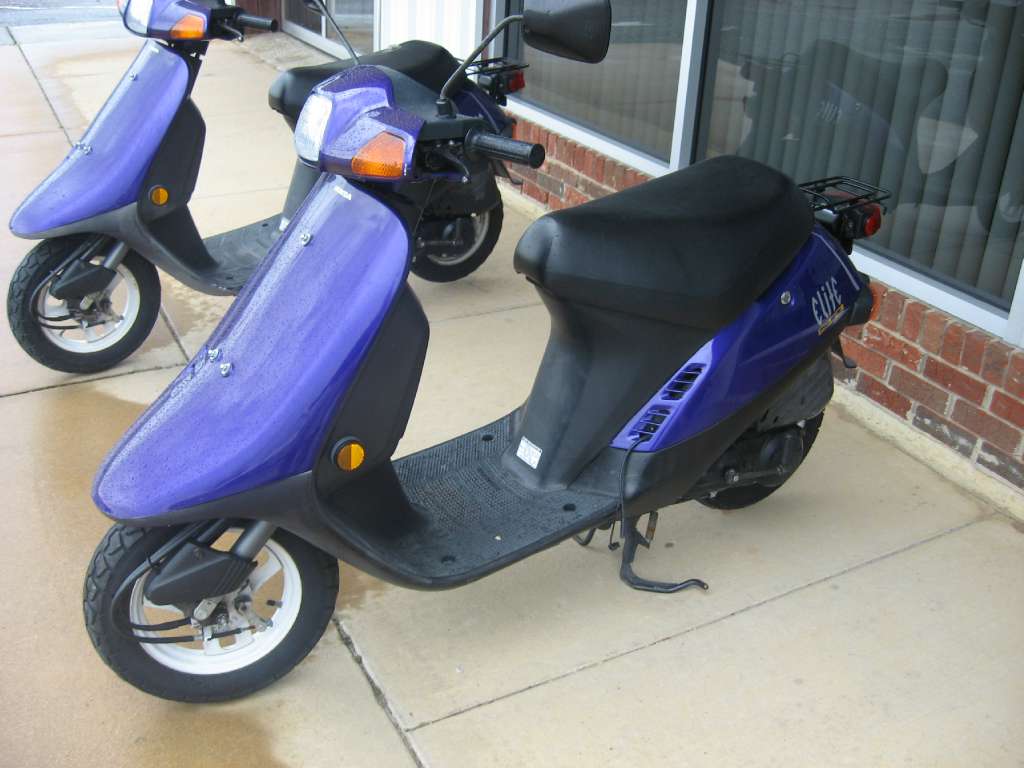
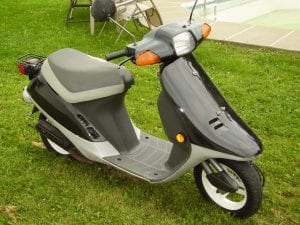
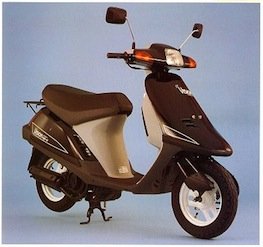 Discussion
Discussion